During these uncertain times, SMoCA has invited artists and staff to utilize our blog Inspire as an outlet to make meaningful connections by sharing personal reflections and insight into their practice.
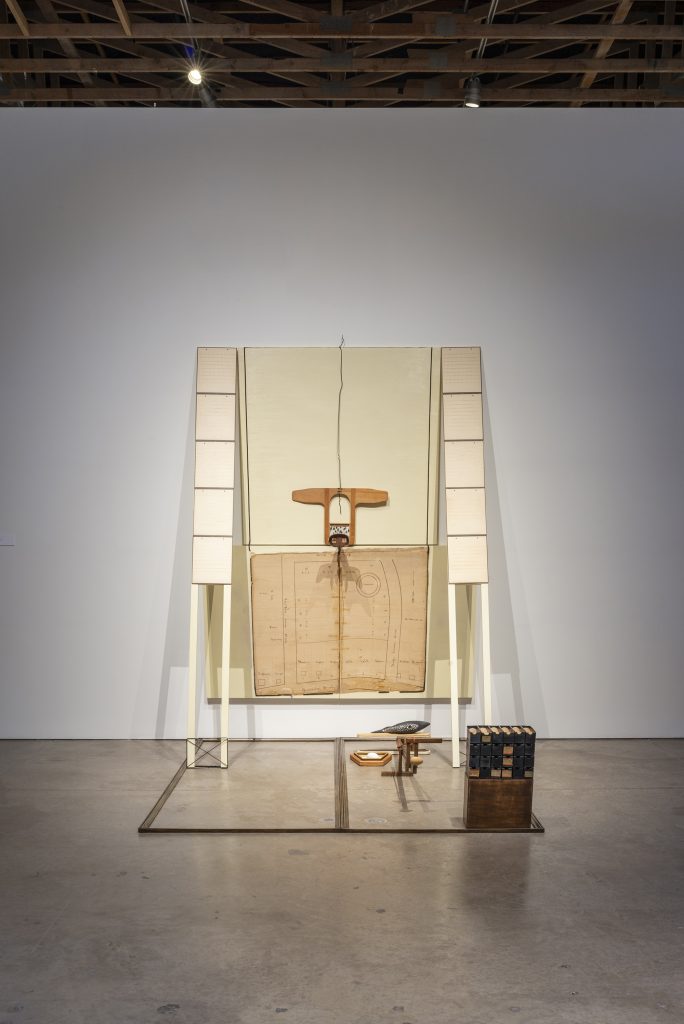
This week, artist Barbara Penn reflects on her work 992: The Dust Behind (1992) from SMoCA’s Collection. This work is also included in the current exhibition Unapologetic: All Women, All Year.
In 1992, I created the installation 992: The Dust behind. I was finding Emily Dickinson’s words to be a very useful partner with my work, at the time. I arrived in Tucson in 1991, happy to be joining a university art department that had just equalized its male/female ratio of professors in fine art. I was privileged to work with a very strong group of feminist minded artists and thinkers which helped me grow exponentially. And with that, my artwork grew while I was teaching. Unfortunately, in later years, I noticed a higher ratio of male hires to female, making the workforce very uneven again.
Raised in the 1950s, I was tuned in to how hard it was for my mother and her generation to be mothers only. World War II (1935–1945), had provided unprecedented opportunities for women, occupations previously thought of as exclusive to men. Women were catapulted to work in factories and defense plants or join the armed forces. When the war was over, most women were jobless.
In the 1960s, my father accepted challenging jobs in New York City. He was able to play squash and tennis, having many trophies to prove it; in fact, he trained my brother to ‘play-to-win’. We girls played, hitting a few balls, but like my dad, my brother was trained to ‘go to the top.’ In response, I chose art over motherhood, tucking away thoughts of having babies. In our family’s case, my father wanted a boy. After four tries resulting in girls—the fifth was a boy! I won’t say it was easy for my brother, but my father did get what he wanted, while my mother seemed to feel that something in her own voice, was sadly missing.
This installation is influenced from what I noticed in society and from my early family dynamics. Emily Dickinson, the Victorian era, and my grandparents’ house, complete with Victorian relics—were all inspirational. For this work, I fashioned a baby-making machine, set on the floor, that figuratively speaking, catapults wooden eggs to fly. From my grandparents’ attic is an old map and mounted to the large canvas—is a section of their small town. On the map, is a double circle, labeled ‘Reservoir,’ a kind-of target. To me, that suggests a place where many eggs could aim and hit the target. While the mechanisms of the machine do not actually work, I made it look like it could move—spring loaded with two large pink rubbery tubes tied together, attached to the device. Nearby is an entire box of organized wooden eggs, almost like ammunition, each egg is waiting its turn.
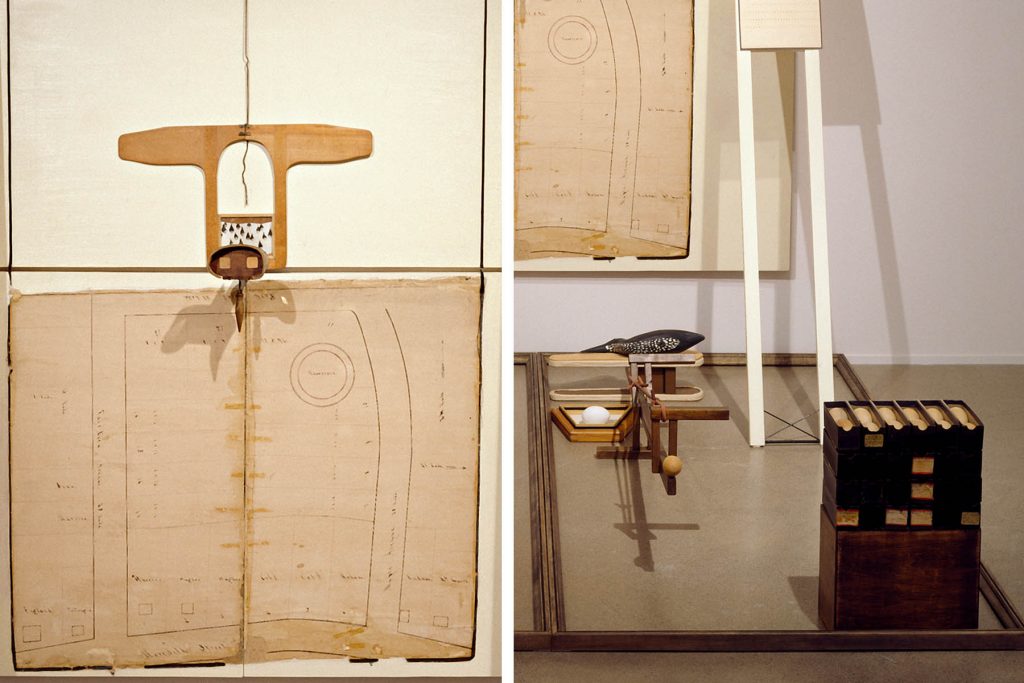
Inside, closer to the canvas, but on the floor, is a hunting bird decoy, laying down sideways on a small antique sleeve ironing board—representing the female. In front of the decoy, a huge white egg is staged, sitting on the floor, inside a tennis racket guard.
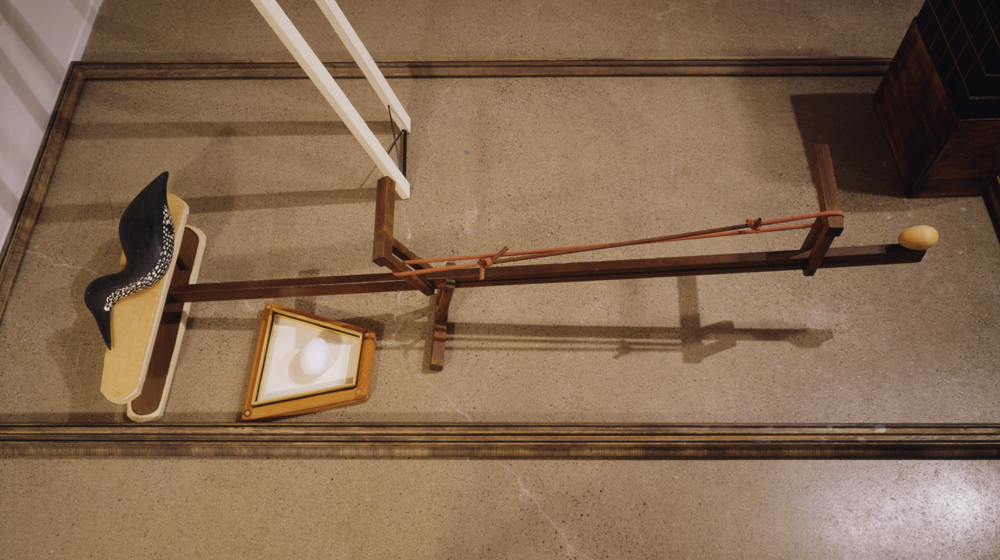
I think of this large egg (my brother) as my dad’s big prize. Hanging from the top center of the canvas, is a long piece of coat hanger wire, asking hidden questions about abortion. The wire hanger makes its way down into the child’s shirt stretcher. Framed inside the shirt stretcher is a small photo/postcard of roughly 16 women, embedded behind the old-fashioned stereoscope, magnifying the photo. Each woman is poking her head out of an individual slit of many slits, cut into a sheet. The photo is titled “Secret Society,” and the photographer is Anonymous.
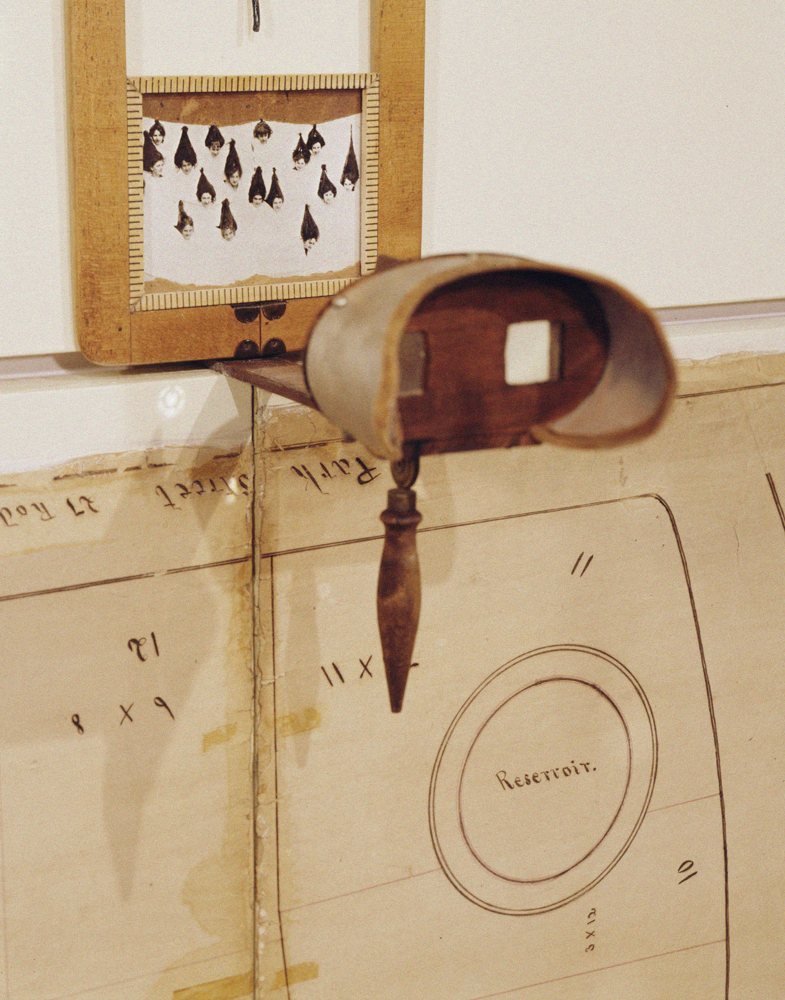
In the mid-to-late 1800s, some states began passing laws that made abortion illegal. One reason for those laws included the fear that the population would be dominated by the children of newly arriving immigrants; the immigrants whose birth rates were higher than those of Anglo-Saxon women. And so, it goes on today, with immigration taking on other forms of discrimination.
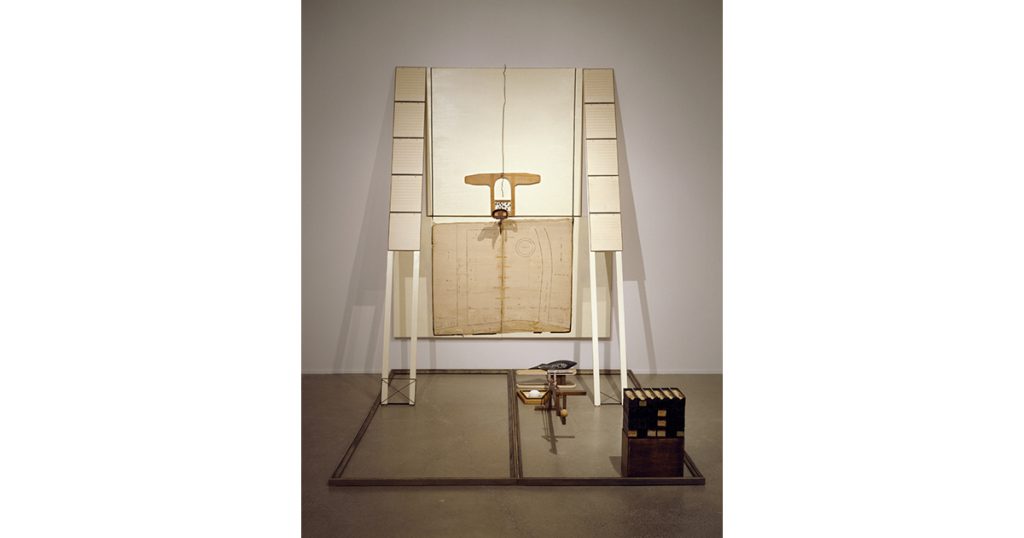
The five sections on the top of each side panel are made from old notebook pages, each covered with small dots, representing missing information. This refers to how women in our society are hidden or dragged behind. Women are still treated as unequal to men, and not rewarded—not as mothers, nor as workers, and they are less than visible in the history books. Many movements are afoot, including the #MeToo Movement, examining multiple and diverse forms of discrimination. We have a long way to go for so many marginal groups, whose worth remains undervalued.
Below is the poem that matches the title of my installation:
992
The Dust behind I strove to join
Unto the Disk before—
But Sequence raveled out of Sound
Like Balls upon a Floor—
c. 1865 1955
Poem by Emily Dickinson from The Complete Poems of Emily Dickinson, edited by Thomas H. Johnson.
The number of the poem is 992, organized by Thomas H. Johnson, editor. 1865 was the year the poem was written. 1955 refers to the year this poem was first published.
It’s important to note that I came across this poem after I created the artwork. It had a magical feeling of motion and musicality. I like the thought of stirring up the dust. Even today, women’s issues that step up, and progress for a spell, can often backslide. Women are still not fully recognized for the true and heroic worth that they possess and freely give. As in the Dickinson poem, “Women strive to join, But Sequence raveled out of Sound…”
Back to Inspire home.
CONNECTIONS: Spark | Amplify | Immerse
